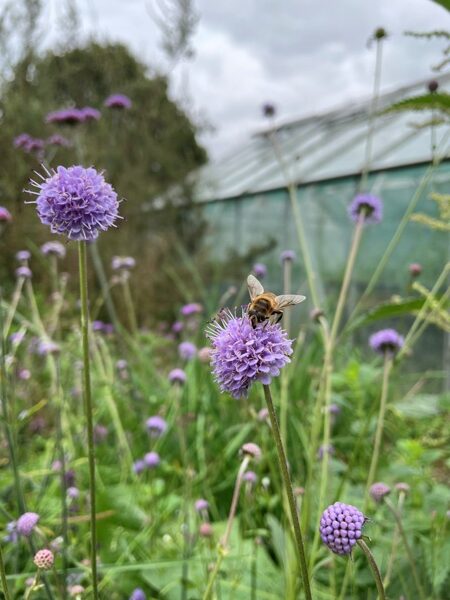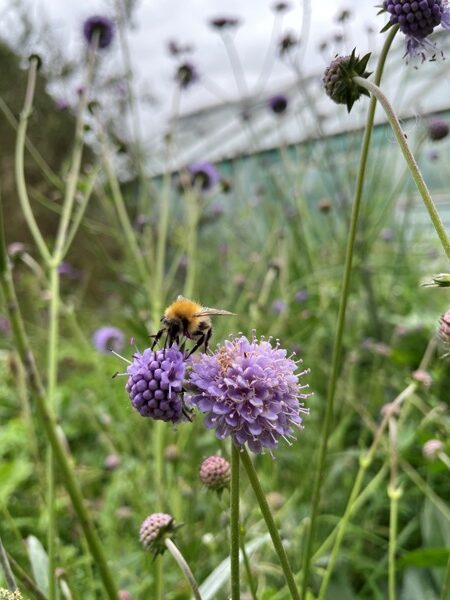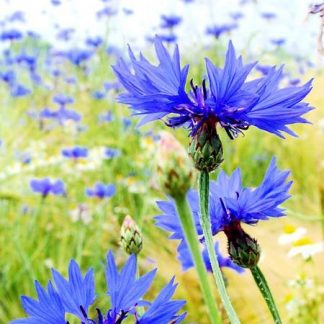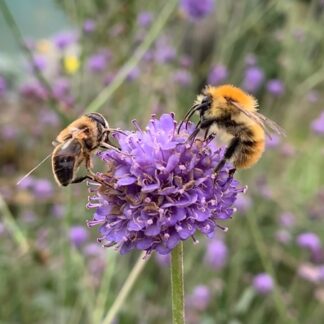Description
Dipsacaceae (family name)
Forage for Pollinators: Produces Nectar and Pollen for Honeybees, Solitary bees (especially Andrena marginata), short-tongued, and particularly for long-tongued Bumblebees (such as Bombus pascuorum). Also for Hoverflies, Butterflies and is famously the larval food plant of the rare Marsh Fritillary butterfly (Euphydras aurinia)their caterpillars emerge June and July and hibernate in dense communal ‘webs’ over winter to emerge in spring and pupate in low vegetation in April to lay eggs in batches on Succisa pratensis. The larval food-plant of The Narrow-bordered Bee Hawkmoth (Hemaris tityus), feeding exclusively on Succisa pratensis in flower-rich grassland.
Flowering time: July, August, September.
Growing information: NATIVE PERENNIAL WILDFLOWER growing to 0.4 m (1ft 4in). Devil’s-bit Scabious is so named because its roots end abruptly as though bitten off by the devil. The leaves of the basal rosette are elliptical, dark green and often blotched with purple whilst the few on the stem are narrower and occasionally toothed. It is slow growing, preferring damp to free-draining soils which are neutral to mildly acidic, and is found in a range of habitats including hay meadows, damp pasture, woodland and heaths.
(Sow ideally in autumn into a seed tray left outside, out of reach of mice but still exposed to rain)







